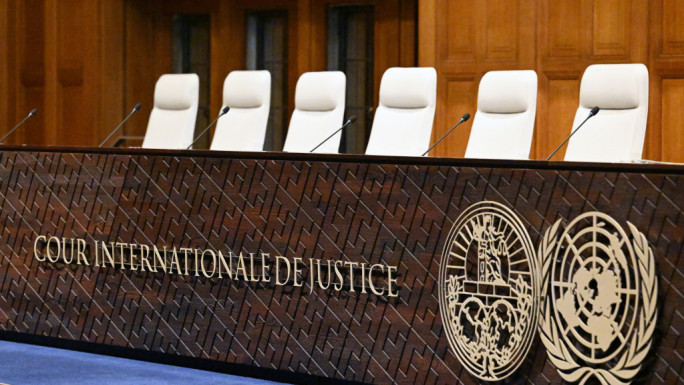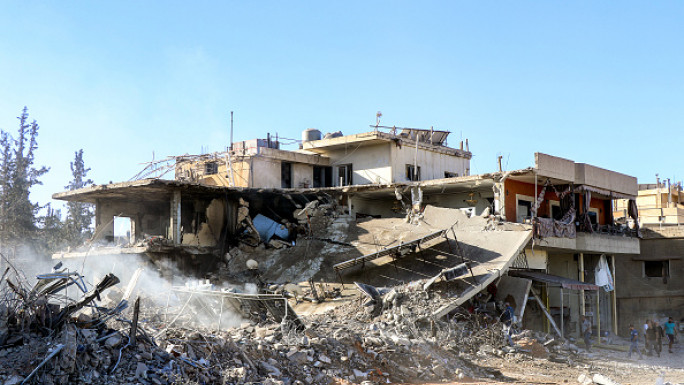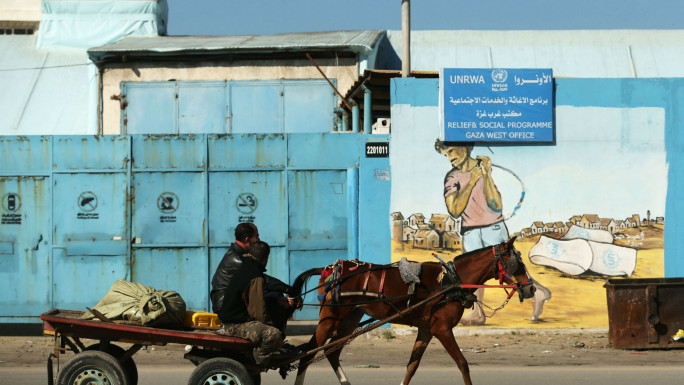
Revolution is a process, and it's far from over
Eight years after the explosion of the 2011 Arab Spring revolutions, the situation in the region looks bleak in the eyes of many.
In Egypt, Libya, Syria, Bahrain and Yemen, where fully-fledged uprisings took place, counterrevolution has taken hold. In Tunisia, where the wave of uprisings started, there was a transition to democracy, but the revolution is yet to achieve many of its demads.
While it might be easy to declare the Arab Spring dead, the story is far from over.
Revolution is a process
Revolutions often take people by surprise, including the revolutionaries themselves. But a national uprising does not occur in a vacuum, and is usually the climax of a process that has already been brewing slowly in previous years. Dissent accumulates, and not necessarily in a linear direction.
In Egypt, the 25 January 2011 revolution has roots that can be traced back to 2000. By the end of the 1990s, Hosni Mubarak had managed to crush all forms of dissent.
The outbreak of the second Palestinian intifada, however, created ripple effect throughout Egypt, sparking mass protests (probably on a scale unseen in the streets since 1977), to be followed by riots in April 2002, and March 2003 with the invasion of Iraq.
Read more: Egypt's hidden history of dissent
This mobilisation evolved into the Kefaya (Enough) movement against Mubarak, in the years 2004-2006. Though it never became a mass movement, Kefaya helped shake the political scene and encouraged sections of the population to start mobilising and raising demands.
Industrial action started to pick up in the textile sector by December 2006, when the "Winter of Labour Discontent" launched. By 2008, Egypt had witnessed two mini "bread uprisings" in Mahalla and Borollos. Though they were put down by security forces, strikes continued to spread, together with anti-police torture protests, until we arrived at the uprising of 2011.
 |
Arab tyrants across the region have flocked to declare their support for Bashir, because they know all too well how the domino effect of a victorious revolution can play out |  |
Throughout the early 2000s, and even at the start of the uprising, Mubarak's sponsors regularly asserted that his regime was "stable!"
Each country that witnessed an uprising in 2011, went through a process of its own in the previous decade(s). And other countries in the region - though they may not have witnessed a full-blown uprising - have been going through their own processes of accumulating dissent, albeit at different paces, and influenced by specific domestic and foreign factors.
Today, the outbreak of a new revolution in the region, outside those countries that constitute the "belt of defeats" could start to shift the balance again to the side of dissent, and trigger a revolutionary revival through the domino effect.
Revolutionary potential
Twitter Post
|
Sudan's current uprising is a case in point. The proud Sudanese are rightly quick to cite their long history of resistance, which brought down military dictatorships in 1964 and 1985.
The current revolt draws on a rich tradition, and is naturally linked to a revolutionary process that has been brewing for more than a decade. Sudan witnessed protests in 2011 and 2012 that escalated into renewed waves of discontent in September and October 2013, before exploding in December 2018.
Arab tyrants across the region have flocked to declare their support for dictator Omar el-Bashir, because they know all too well how the domino effect of a victorious revolution can play out.
Read more: Egypt's dirty war (part I): Baptised in blood
If triumphant, this Sudanese revolution could open a new horizon for revolutionary prospects in the region.
Jordan is another country where dissent has been accumulating, largely unnoticed. The country saw waves of protests in 2011 and 2012, that did not amount to a fully fledged uprising.
But last summer, Jordanians took to the streets in the capital and the provinces, in a more militant mobilisation against the government. These demonstrations were triggered by a taxation bill, austerity and other policies, but protesters were quick to raise demands related to political detainees and freedom of expression. On occasions, the chants went on to denounce King Abdullah II himself, breaking a long established taboo.
Arab despots were once again quick to move to shore up the regime's stability, promising packages of economic aid. The Jordanian protests had regained momentum by the end of last year, but have fizzled out temporarily. A potential revival remains very possible.
In Algeria this week, thousands took to the streets in the capital and other major cities, protesting Abdelaziz Bouteflika's plan to seek a fifth term in office. The protests are probably the biggest since 2011, and are throwing the country's decaying political establishment into crisis, which also has the potential to escalate.
 |
Even today, the revolution and its chants remains in their collective memory |  |
Morocco did not witness an uprising in 2011, but saw protests in 2011 and 2012 that were put down using a combination of state repression and promises of reforms. The situation escalated to mass protests over economic conditions, police brutality and crackdowns on civil liberties during 2016 and 2017 in several cities, largely in the north.
The regime ruthlessly crushed the movement. The protests and strikes have declined temporarily, but dissent is still brewing, as the grievances were not addressed, and a revival of radical street politics remains a distinct possibility in the future.
Sudan, Jordan, Algeria and Morocco are just four examples of reservoirs of dissent that could change the regional scene in the future, but they are not the only ones.
Revival in the 'belt of defeats'
The reasons that led the masses to revolt in Tunisia, Egypt, Yemen, Bahrain, Libya and Syria are many, but the common denominator is their desire for social justice, and an end to political repression, summed up in their slogan, "Bread, Freedom and Social Justice".
The counter-revolutionary regimes in place today not only have failed to address those grievances, but also aggravated them exponentially, which means the objective conditions for another revolt remain.
| Article continues below interactive timeline |
| |
It's clear, however, that this is unlikely to take place anytime soon. The onslaught of the counter-revolution has been ruthless, and the price paid by the people has been high. Many have been killed or imprisoned, activists and refugees have escaped en masse and revolutionary organisations and independent unions have been destroyed in these countries, with the exception of Tunisia.
No less important, is the fact that many in these countries feel demoralised with the status quo. They need some level of assurance that if they were to revolt again, they wouldn't have to end up with another catastrophic military tyrant, or (like in Tunisia) a regime that will diffuse their demands and water them down.
They need to see a successful model in the region, and the people of Sudan could be the ones to play this inspirational role.
If the revolution in Sudan succeeds in toppling the military dictator and creating a new, democratic alternative, it is unlikely to revive revolutionary politics in the "belt of defeats" immediately, but could act as a catalyst for speeding up their recovery.
Collective memory
Last month, Egyptian police troops raided Nazlet el-Samman, a poor, urban neighborhood close to the Giza Pyramids, trying to demolish what they described as "illegal buildings".
In essence this is a fight against gentrification. The residents fought back, chanting "We will not leave. You are the one who should leave" at the police, echoing the Tahrir protesters' chants against Mubarak.
 |
This collective memory will help ensure that when the next round of protests ignite, we will not start from zero |  |
Ironically, Nazlet el-Samman is the neighbourhood whose residents provided the backbone of Mubarak's supporters who tried to storm Tahrir Square during the infamous "Battle of the Camel" in February 2011.
Even today, the revolution and its chants remains in their collective memory, and they find no other means to express their attempts of defiance.
The collective memory of the revolution is still alive, and thanks to the internet, it is largely preserved, visually documented, and accessible on a daily basis to large sections of the population in every country.
This is an advantage our generation has, compared to the previous revolutionary efforts, whose memories have been buried or faded.
This collective memory will help ensure that when the next round of protests ignite, we will not start from zero; we will at least have a concrete experience and tradition to build on.
Hossam el-Hamalawy is a journalist and labour activist from Cairo.
Follow him on Twitter:@3arabawy
Opinions expressed in this article remain those of the author, and do not necessarily represent those of The New Arab, its editorial board or staff.





 Follow the Middle East's top stories in English at The New Arab on Google News
Follow the Middle East's top stories in English at The New Arab on Google News


